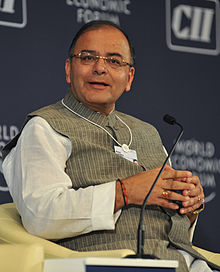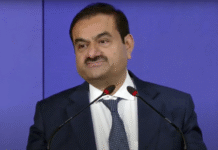New Delhi– Days after thousands of farmers held a protest march against the government’s “anti-farmer” policies, Finance Minister Arun Jaitley on Tuesday said inadequate resources by the Congress resulted in rural distress, while the NDA is filling the gap.
“It was inadequacy of resources pumped into the agricultural sector by the Congress that had led to both an agrarian distress and an inadequate quality of life in the rural areas,” he said in a Facebook post comparing the measures taken by the United Progressive Alliance (UPA) and the National Democratic Alliance (NDA).
“Removing the agrarian distress and improving the quality of life in rural areas can’t be done by slogans alone. From 1971 onwards, the Congress policy was slogans and not resources. The NDA has pumped in resources into the rural areas,” the Minister said.
Jaitley said these resources have improved the infrastructure, quality of life in villages, raised agricultural productivity and are intended to give a remunerative price to the farmers to make them self-sufficient rather than be only dependent on state agencies.
While India had 3.8 lakh km of regular roads before Prime Minister Narendra Modi assumed office in 2014, by November 2018 the figure touched 5.7 lakh km, an increase of 1.9 lakh km, he said, adding investments in rural roads have increased three-fold.
As of 2013-14, about 70 per cent of the 17.47 crore rural households were electrified in the first 67 years of Independence. But by November 2018, 16.53 lakh households, or 95 per cent, have been electrified, he said.
On rural housing, he said while the UPA built about 10 lakh houses for the poor in rural areas in its final year, it has increased four-and-a-half times to 45 lakh houses being constructed currently.
“By 2022, every rural Indian will live in a regular house,” he stated.
Since the launch of Swachcha Bharat Yojana in October 2014, the sanitation coverage in rural households rose from 38.7 per cent to 96.72 per cent.
Further, 33.3 crore Jan-Dhan Accounts were opened by November 2018, virtually linking every person to the banks, he said.
Under Ujjwala Yojana, 5.8 crore households were provided cooking gas connections in just one-and-a-half years and the coverage will increase to 8 crore by March 2019. Also, 13 crore households have been given Mudra loans including 54 per cent women, he said.
On healthcare, he said while the poor, particularly the rural poor, had inadequate medical facilities during the UPA regime, NDA’s Ayushman Bharat today covers 10 crore of the poorest households, almost 40 per cen of India’s population, with Rs 5 lakh a year.
“For the last two months since the scheme has been in operation, about 3.8 lakh number of people have got the advantage of this,” he said.
On farmers’ income, he said government has raised its expenditure on animal husbandry, dairy and fisheries to increase the productivity of the farmers and their income.
“There has been increased investment in agricultural research and education. Investment in irrigation has substantially increased. To help the poorest, under the rural job employment scheme this year close to Rs 60,000 crore, if not more, would be spent on MGNREGA.”
While Rs 1.6 lakh crore has been set aside for food subsidy, the Minimum Support Price (MSP) has been increased on several products to ensure cost plus 50 per cent. The amount sanctioned for interest subvention has been doubled, he said.
Further, Jaitley said last year (2017-18) a phenomenal amount of Rs 3,96,831 crore was spent on the poor and rural areas. This year the expenditure is likely to be around Rs 4,38,741 crore. UPA had spent Rs 2,41,602 crore in its last year.
“The past four-and-a-half years are just the beginning. If this level of investment with its annual increase is continued in the rural areas for at least the next two decades, we will be close to providing a quality of life and infrastructure in rural areas which is more urban like,” he said. (IANS)







